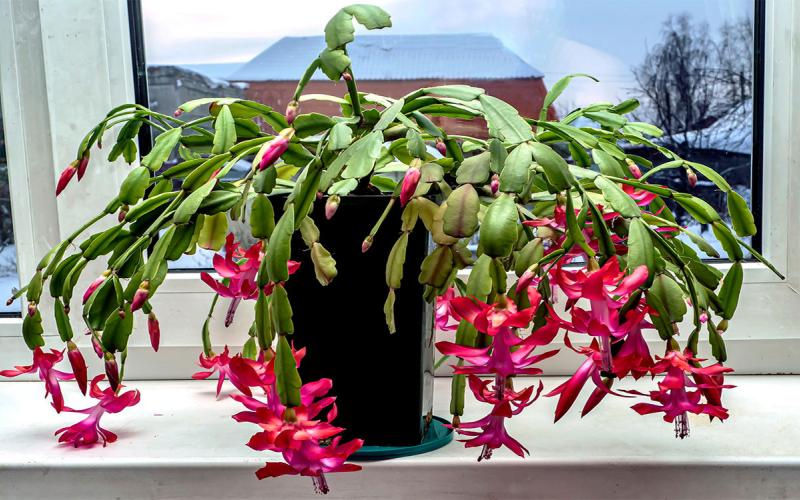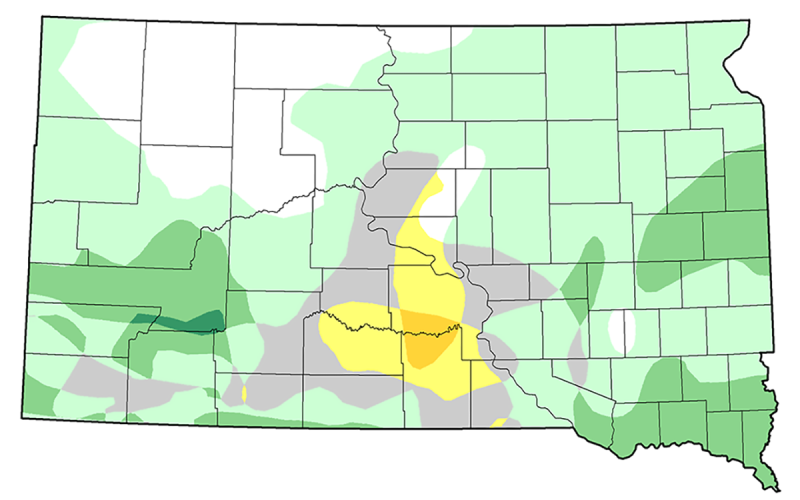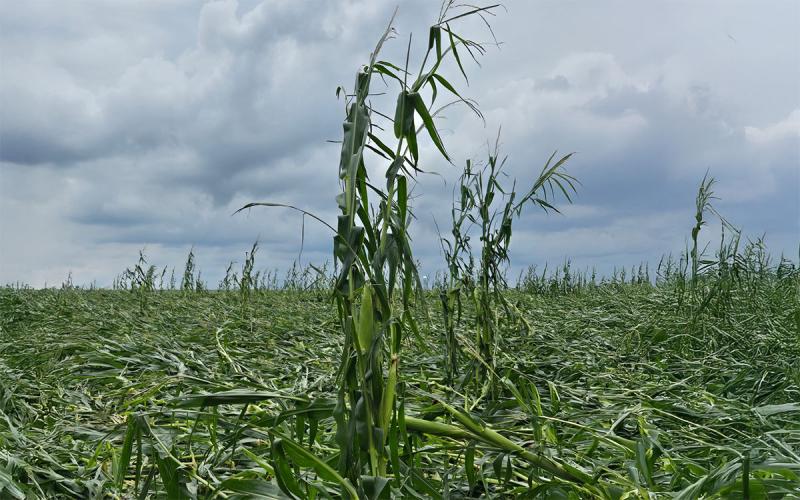
After a very welcome warm and relatively dry April, the month of May has brought winter-like temperatures again to South Dakota. Low temperatures have been recorded in the mid-20s in some parts of the state. Crop producers in the state are in varying stages of planting their crops. Small grains planting of oats and spring wheat are mostly complete, corn planting is in different stages with some growers in Southeast S.D. done planting, while others are in the process, and soybean are just being started. Historical data from South Dakota shows that majority of corn in the northern part of the state is planted between May 10th and May 26th, while the southern half planted between May 1st and May 26th. This year, very favorable weather in April encouraged most farmers to begin their spring activities early, however, colder days with intermittent rain in May have delayed these activities. Due to cold and wet conditions, concerns of the cold temperatures have been expressed by producers who have recently planted corn.
Effects of Cold Weather on Early Planted Corn
Although modern varieties may differ in cold temperature tolerance at planting, as a general rule, corn should not be planted when soil temperature measured at the two-inch depth reaches or approaches to 50°F in the morning. Regardless of crops, the newly planted seeds imbibe water from the soil to initiate the germination. One of the major risks in this process is newly planted seeds absorbing cold water and getting exposed to ‘imbibitional chilling injury’. This injury occurs when newly seeded kernel absorbs cold water within the first 24 to 36 hours of planting. When kernel cell tissues are cold they become elastic and may rupture during the imbibition or swelling period. Chilling injuries may also occur after the seed germination which often causes stunting and/or seminal root damage. A deformed elongation of mesocotyle in corn (corkscrew symptom) is a result of cold injuries that followed seed germination.
Germination and emergence are slower when temperatures fall below 50°F. This can lead to exposure of seeds to soil borne pathogens, especially when soils are wet for prolonged period.
If the corn is already emerged, the cold weather injury from temperatures falling below 28°F can range from minor leaf injury to complete killing of the tissues. The positive news is the growing point of a corn plant remains below the soil surface until V4 growth stage (four leaf with identifiable collar). New growth that comes after weather resumes to normal will not show any signs of damage. This freeze set-back may slightly delay growth and development, although impacts on yield are rarely noted. If the weather event is suspected to be lethal, field assessment should be done after 7 to 10 days.
Planting Date Versus Planting Time
Early planting may not always turn out to be the best for highest yields. Different factors, including weather, soil conditions, pest pressure and other biotic and abiotic factors can impact optimal planting date in any given field and year. Data from a recent multi-year study conducted in Iowa shows that optimum yield can be achieved when corn is planted within windows of time rather than a specific calendar date.
Suggested Reading:
- Abendorth, L.J. K.P. Woli, A. Meyers, and R. Elmore. 2017. Yield Based Corn Planting Date Recommendation Windows for Iowa. Crop Management. DOI.
- Elmore, R., J. Specht, J. Rees, H. Yang, and P. Grassini. 2018. Cold Soil Temperature and Corn Planting Windows. University of Nebraska- Lincoln.
- Hall, R.G., K.D. Reitsma, and D.E. Clay. 2009. “Corn planting guide.” Pp. 13–16. In Clay, D.E., S.A, Clay, and K. Reitsma (eds). Best Management Practices for Corn Production in South Dakota. EC929. South Dakota State University.
- Nielsen, R.L. 2012. Early-Planted Corn and Cold Weather. Purdue University Agronomy Department.


